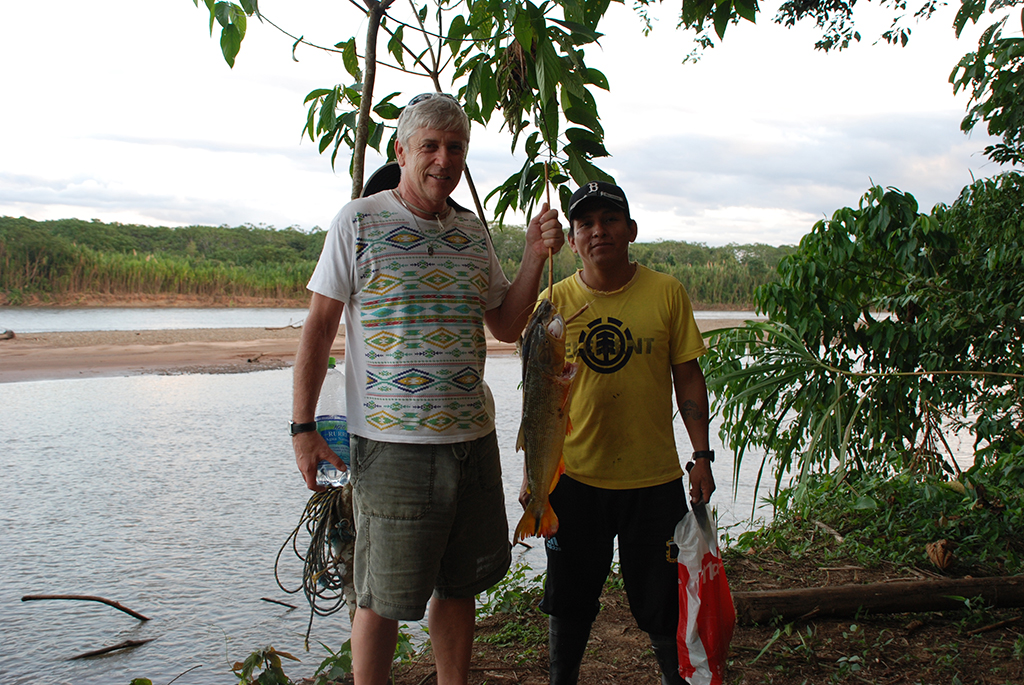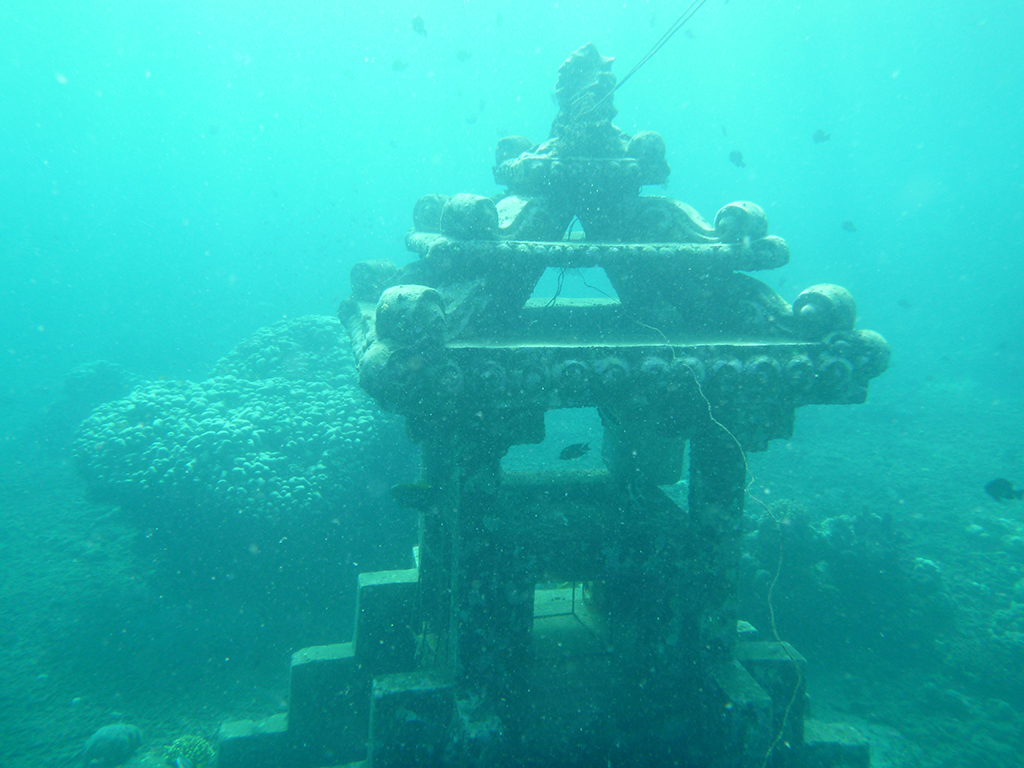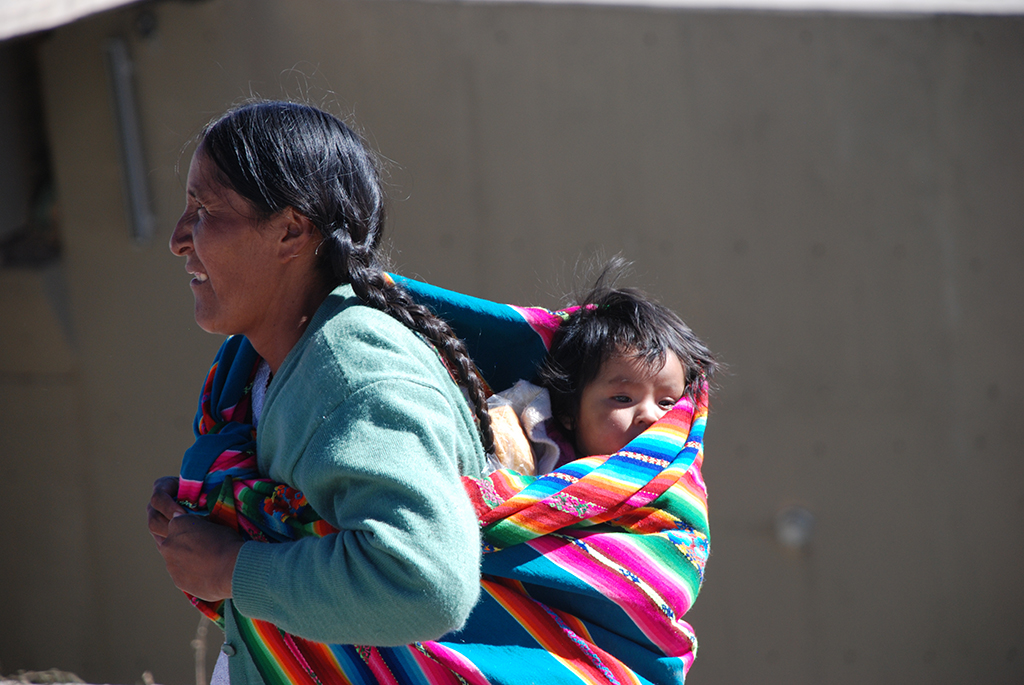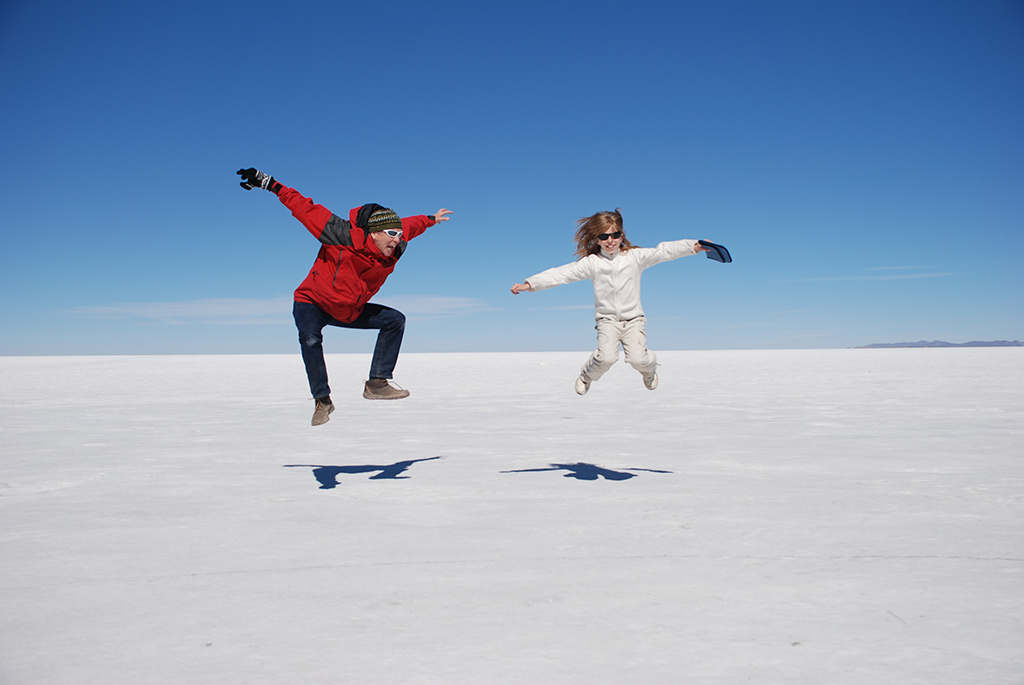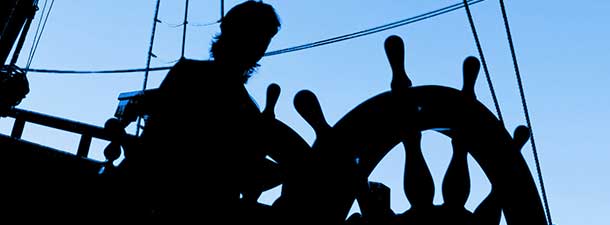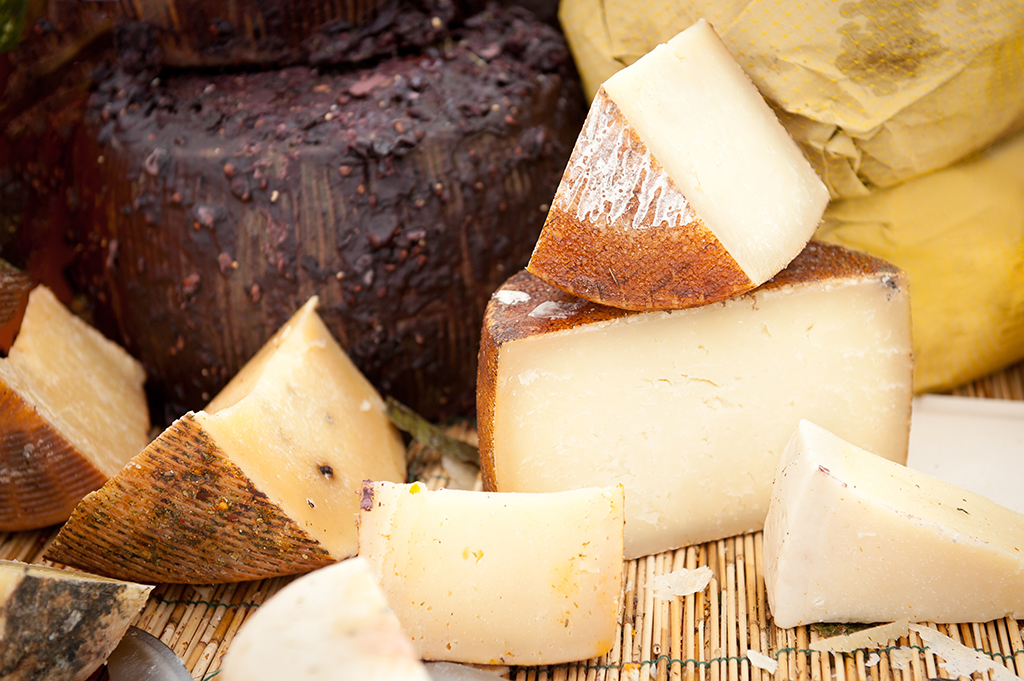
A Mix Platter of Italian Cheeses
December 10, 2013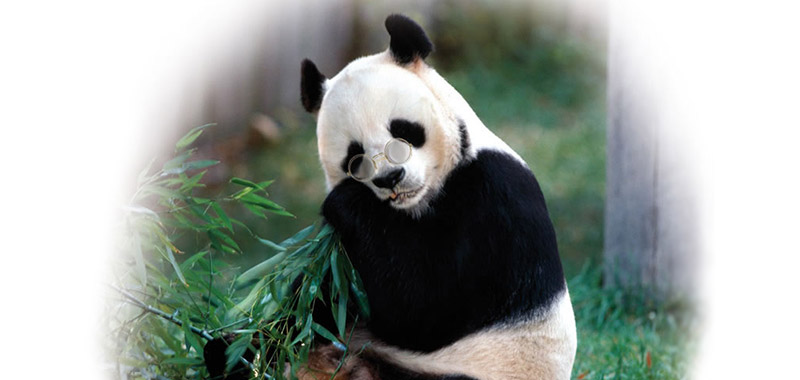
Nonno Panda TALES 13
December 10, 2013Bored of week-end breaks? Fed-up of tiresome tourist-filled weeks of sand and sea?
Then try taking four months off and backpack around the world with your family!
by Nigel Parsons
Two thousand words, the editor said. That gives us about 300 words per country, so this is going to be brief – but the pictures can tell the tale.
As a family we’d been talking and dreaming about backpacking around the world for years, but like most people there never seemed to be the time, or the opportunity. Work, school, paying the bills and survival took precedence.
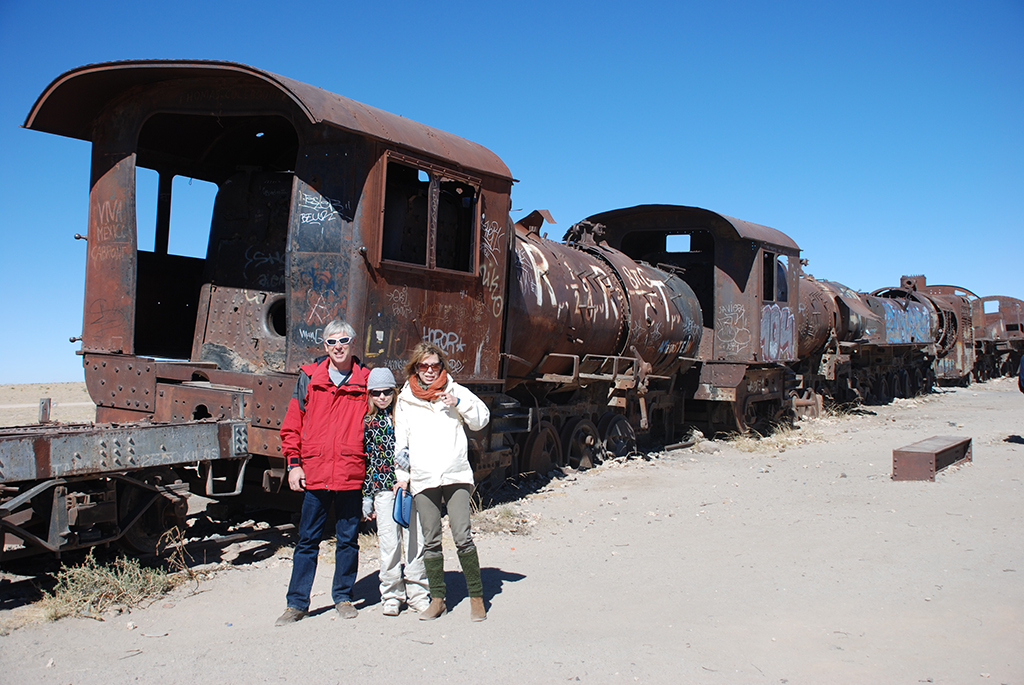
Then finally, as we sweated on the results of final primary school exams for the last of our children still in the nest, all held early in the New Year, we suddenly thought ‘if she does well, what’s the point of summer term?’
That thought was re-enforced when Nikita, our 11-year-old daughter, sailed through her exams – possibly spurred on by the thought of missing the summer term, and travelling the world instead – to be left with a choice of secondary schools to take up in September. Plus it helped that I was ‘between jobs,’ and that the heads of both her primary school and chosen secondary school gave their full support – she would learn more on her travels, they said, than seeing through her last term in primary with only the summer school play to look forward to.
It felt like our last chance – we were pretty sure Nikita wouldn’t be so keen on seeing the world with us by the time she finished secondary school. So one day, Zoulfia, my wife, and I went to our local outdoor shop on the spur of the moment and bought 3 backpacks. It was a statement, and with the backpacks lying on the kitchen floor we were committed.
Having made the decision, the planning suddenly seemed daunting. It’d been 40 years or more since I’d last gone backpacking in any serious way, 40 years of corporate life, and we weren’t really sure how to go about this.
For tickets though, there are a number of reputable companies who offer round-the-world options – both East & West – and they are remarkably good value. We ended up paying just under 3,000 euros per adult ticket, less for Nikita. You can pretty much tailor the route to suit yourself. We settled on London to Lima for the first leg, then making our way overland to Santiago (Chile), on to New Zealand, the South Pacific, then on to Bali, Singapore, and Sri Lanka, where we planned to meet up with our 3 older children, now spread across the Middle and Far East.
Whatever didn’t fit in our rucksacks was left behind – we’ve found that, like most people, we always pack more than we need – and at the beginning of May we set off for Peru.
We landed in Lima late in the evening, and checked into a comfy bed & breakfast in Miraflores – an upmarket and relatively safe area, which made for a good choice in a city with so many no-go areas for tourists.
Despite initial misgivings borne of Lima’s reputation, we enjoyed the city – the beautiful walks along the clifftops, the indigenous handicraft markets, food markets where we could eat ceviche (fresh marinated seafood) for under the equivalent of 2 euros each, and above all the friendliness of the locals.
Travelling by bus is easy in South America….they are cheap and plentiful, and for the overnight trips there is the choice of lie-flat beds……and there’s no better way to observe local people up close. We headed for Cuzco, the gateway to the ‘Sacred Valley’ and the staging post for people heading for the ancient Inca capital of Machu Picchu.
Cuzco already lies some 3,500 metres up, leaving us breathless for the first couple of days. We were told that many people simply can’t adapt to altitude sickness, but by taking it easy to begin with, we soon got used to it and it didn’t trouble us again – even when we ventured much, much higher in Bolivia.
Cuzco is also a tourist honey-pot crawling with touts offering all manner of day trips, over-priced hostels and some very over-priced restaurants. But again, head for a local café where the workers are eating, and you get a three-course meal for what came out as two euros each. We were quickly realising that by renting out a modest London house, it was almost cheaper to go away and travel in South America than stay at home.
Astonishingly beautiful though Cuzco was, we soon wanted to press on. Backpacking makes you restless, the travelling becomes almost as important as the arriving, and after a few days anywhere we had itchy feet. We boarded a train in the nearby market town of Ollataytambo and rattled along through narrow gorges, following the river to Aguas Calientes at the foot of Machu Picchu (which literally means ‘big mountain’).
Despite the thousands of tourists who visit every day, Machu Picchu is one of those places that, no matter how many photos you may have seen, it still has the capacity to take your breath away and astonish.
We left our hostel at 4.30 a.m. when it was still dark. People were already queuing for the buses that would take tourists up later in the morning, but we wanted to trek it, and reach the summit before dawn and before the first of the hordes would arrive. We made it to the top after about two-and-a-half hours, just as the huge orb of the sun leapt over the mountain tops, bathing the ruins in soft light. Another hour later, and we had reached the Sun Gate, and sat gazing out across the snow-capped peaks at the marvel that is Machu Picchu.
Next on the itinerary was a bus to the southern town of Puno, on the Peruvian side of Lake Titicaca, the highest in the world at 4,000 metres. The landscape across the high Altiplano was barren, sparsely populated by people in startlingly multi-coloured clothes, with sun-blistered faces, prematurely aged, somehow scratching a living out of the unforgiving land.
Puno is a dilapidated town, our last stop before Bolivia, but also boasting extraordinary floating villages out on the lake– some 75 reed ‘islands’ supporting nearly 3,000 people living off ducks, fish and eggs, and little else, complete with their own schools, and even a small hospital. The up-side of the floating villages is that, if you argue with your neighbour, you can cut them off – literally – and they float away!
Crossing into Bolivia, the mood changed immediately. A demonstration by grim-faced villagers meant the bus couldn’t cross the border, and we had to unload our bags and cross the last few hundred metres on foot. After the smiles of Peru, the Bolivians came across as surly, poor and dirty – which made the bus journeys a little harder to bear, reeking as they did of unwashed bodies. All the women seemed to have the same hairstyle, two long plaits down the back, and a bowler hat on top.
Only once (in La Paz) did we manage to find somewhere to stay with hot water. But despite that, Bolivia was also the most memorable country – a country of superlatives – the highest lake in the world (Titicaca), the highest capital in the world (La Paz), the highest city in the world (Potosi) and the biggest salt flats in the world.
It is also one of the best places to explore the Amazon basin, being far less developed than neighbouring countries. So, after a few days in the gritty city of La Paz, dodging the daily demonstrations with miners liberally throwing around sticks of dynamite, exploring the witches’ market, and being amazed by the volume of graffiti everywhere – much of it devoted to the legendary guerrilla fighter Che Guevara – we boarded a small aircraft for the 45-minute flight to Rurrenabaque on the banks of the river Beni. The flight meant splashing out beyond our budget, but the alternative was a 24-hour bus ride across 6,000 metres high passes which are closed as often as not.
Rurrenabaque is a charming Amazonas town from where we caught a small outboard up the wide, brown waters of the Beni to a jungle lodge. With a guide, we spent days trekking through the rain forest, squeezing out sugar cane juice to drink from cups made from tutumi nuts, eating matacu nuts which tasted like a cross between an avocado and a coconut, learning how to identify ‘water trees’ which hold several litres of clean, fresh drinking water, dodging soldier ants and fire ants, marvelling at toucans and macaws, and the giant guinea pigs called Capybaras, rooting around at the river’s edge. To cap it all, as a grand finale, we built our own raft by lashing together fallen tree trunks, and poled our way several miles back down the river to the lodge. We felt like we were in a Tarzan movie!
From the rain forest, we then spent several days in the Pampas, a three-hour drive from Rurrenabaque, wetlands teeming with wildlife. There we saw our first sloths – charming black-eyed primates who spend four-fifths of their lives asleep – rare pink river dolphins, hundreds of caiman alligators lining the river banks, a myriad species of birds, howler monkeys, eagles, and best of all a two-metre long anaconda, which we all got to hold before letting it slither away under the Pampas grass again.
After two weeks, we moved swiftly down to the south of Bolivia, stopping briefly in the constitutional capital of Sucre (La Paz being the administrative capital, probably making Bolivia the only country in the world with two capitals), a beautiful city of colonial buildings fanning out from a stunning square. Then it was a one-night stop in Potosi (the highest city in the world, and a grim, freezing town reeking of past glories paid for by its now defunct silver mines), before heading for Uyuni, on the edge of the salt flats – another cold, bleak place with bleak people eking out a bleak existence, where another freezing almost sleepless night awaited.
The next day we set out across the salt flats – or, to give them their correct name, La Salar de Uyuni – hundreds of square miles of salt from a long ago dried-up sea, a blinding white landscape where the temperature hit plus 25C by day before plummeting to minus 20C at night.
It was freezing, uncomfortable – and unforgettable. Probably the most amazing landscape any of us have seen, driving across mile after mile of nothing but salt dried into fascinating pentangle shapes, with occasional lava outcrops supporting huge, ancient cacti – some of which have been around since the Battle of Hastings.
We stayed in miserable ‘lodges’ made from blocks of salt, again with no heating, no hot water, and one toilet to go around about 20 travellers, plus of course the local inhabitants. We handed out the last of the pens and pencils and second hand sunglasses we had brought with us to locals whose eyes were so bloodshot they were almost hanging out of their eyes, and huddled together, three to a bed and fully clothed to try to keep warm.
From the salt flats there were two more days grinding over rocky landscape, which marked the beginning of the Atacama desert – the driest in the world. Shortly before the border with Chile, we stopped and stripped off at some hot springs, desperate for a wash….the water was hot, but outside it was still minus 20C, and our hair froze as we floated in the steaming water.
The Chilean border came as a relief. A shack marked the Bolivian office, but a few hundreds yards beyond that we were on smooth tarmac, heading for the charming mud-baked town of San Pedro de Atacama where we found fine dining and hot showers. Sure, it was a little more expensive than Bolivia, but at least they asked you how you wanted your steak cooked rather than chucking a piece of what looked like a lump of charred shoe leather on your plate. We marvelled at how everything could be so different in such a short space of time and distance – gone were the grimy lodgings with rancid toilets and freezing water, instead we could enjoy good food, spotless hostels, and clean buses on immaculate roads again.
An overnight bus took us across the Atacama desert to the mining town of Copiapo, where, on impulse, we decided to hire a 4×4 for a week to get off the beaten track. We headed to Bahia Inglesa (English Bay), a palm-fringed oasis founded by English pirates on a bay looking out over turquoise water, surrounded by desert. Everywhere we went in Chile, people would tell us, with not a little pride, that they were known as ‘the English of South America.’ Pirates or no pirates, that was fine by us and made us feel even more welcome.
With the independence of our own vehicle we cut down the awe-inspiring desert coastal road, an unpaved but well maintained road with the Pacific sea on one side, and desert cacti with occasional grazing alpacas stretching away on the other, and not a soul in sight. We drove through the day, stopping for picnics or to do some beach combing, and probably saw less than half a dozen other cars until we pulled into the iron-ore port of Huasco to find lodgings for the night – and as far as we could see, we were the only tourists in town.
Bypassing the resort city of La Serena, which looked to us like a sort of Chilean version of Benidorm out of season, we headed inland through impossibly narrow vineyards full of muscatel grapes to stay at Pisco Elqui…home of the Chilean national drink, ‘pisco’. Chile and Peru both claim to be the originators of the drink – with a former Chilean president going so far as to re-name what was the village of ‘La Union’ to Pisco Elqui to help re-enforce the Chilean claim. Of course the Peruvians also have a town called Pisco. Either way, it’s delicious in both countries.
Pisco Elqui is also one of the best places in the world for star watching (as was San Pedro de Atacama). With the valleys so narrow, it is past 9 a.m. before the sun makes an appearance, and then it is already scorching. The locals claim it has an eco climate that gives sun for 360 days of the year, and it’s like being in a bowl, surrounded by mountains. By the time the sun disappears again by mid-afternoon, the air cools rapidly, and as night falls you can sit back and gaze at the brilliant constellations – even if, being in the southern hemisphere, we always had trouble locating our usual familiar shapes such as the Plough or Great Bear.
Heading back to La Serena to drop off the car, we decided on a short-cut through what looked like a pretty little mountain road, but which quickly turned into our very own ‘Death Road.’ As we climbed into the clouds, the ‘road’ became little more than a dirt track, hardly more than the width of the car, with a vertical drop hundreds of feet on one side, and rocks rolling down on us from the steep cliffs on the other. It was too narrow to turn back, the swirling clouds reduced visibility to a few metres, and we had no choice but to creep onwards, not much faster than walking pace, teeth and buttocks tightly clenched in fear, until some two hours later, through a break in the clouds, we glimpsed a flash of green from the valley below, and knew we would make it.
Yet another bus took us to Valparaiso, once the main port
on the Pacific coast – before the Panama Canal got built.
Another town founded by English pirates, later to become an ‘official’ British ‘Protectorate’, it is also the birthplace of the poet Pablo Neruda and remains an artistic centre today. Built on a series of volcanic hills, everything is covered in astonishing murals….
inside and outside houses, on streets and on the steep steps that are everywhere (though ancient funicular railways built by the Victorians make getting around much easier.) Many of the paintings are intricate and beautiful, others funny & gaudy, and others just thoughts for the day – our favourite being ‘Travel is the only thing you can buy which makes you richer.’ London’s famous street artist Banksy would go unnoticed in Valparaiso!
It was now just a short hop down to the capital, Santiago. We wanted to travel further south in this remarkable country, down to Tierra del Fuego, but that’s virtually the Antarctic – winters are brutal, roads are often closed, and flights uncertain. So we decided to save that for another day.
Santiago is a big bustling city of some six million people, with the edginess that all big cities have – but full of surprises too. Like the Central Market, an exact copy of London’s Smithfields’ market, built in Birmingham in 1873 and shipped out to Chile, a huge wrought iron construction full of fishmongers and small seafood restaurants; or the slick, clean and efficient metro service, which makes getting around so easy.
The flight across the Pacific to New Zealand was bizarre, in that by crossing the international dateline, we arrived two days after we’d left. In Auckland we stayed with friends and explored this remarkable city built on a series of now dormant volcanoes, even if it’s a question of ‘when’, not ‘if, the next one will erupt from below the sea. Auckland is as spotless as any Swiss town, but we still found it odd how many locals were walking around the city barefoot. New Zealand also offered superlative food and wines, long walks on deserted winter beaches, and horse riding through empty countryside. But it’s expensive, very expensive, on a par with any European city.
Tongatapu (Tonga’s main island) in the South Pacific was a short hop from Auckland, a sleepy, flat island, with sleepy lazy people interested in little else apart from rugby. No effort is really made for the tourist – the roads are unsigned, making local attractions like the spectacular bore holes on the north coast, or the underwater caves with fresh water to swim in on the west coast, almost impossible to find. It’s beautiful, but no more so than many other tropical islands, and probably not worth the expense of travelling there as a single destination from Europe.
Bali in Indonesia was a different story – a predominately Hindu island within the most populous Muslim country in the world, it’s a place of harmony and smiles, great food and lush scenery. Balinese Hinduism is a mix of the Indian variety and the Animism which was the main religion before the Hindus arrived – so plants, trees, rocks, just about everything, all represent spirits which need to be placated with offerings and prayers several times a day.
The island also offers almost everything a visitor could want – white water rafting, cycling through quiet villages on back roads, horse riding, trekking, and some spectacular diving.
We were sorry to leave, but time was flying by and so we made our way to Sri Lanka, our last stop. We had rented a villa big enough to take six people on the south coast where our three elder sons also converged and we were able to enjoy a rare holiday altogether.
All too soon we found ourselves back on an airplane to take us home. Arriving at UK Border Control was less than inspiring, we felt as if we’d been away for a few weeks rather than four months – even if our overgrown garden and front yard told a different story. Would we do it again? Absolutely! We could have carried on for another year. It was an unforgettable experience, one that anyone who has the opportunity should not miss.
Nikita entered her new school brimming with a new confidence and understanding of the world we inhabit, and we know it is something she will also never forget – which was what it was all about.




